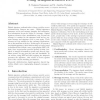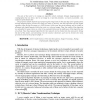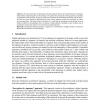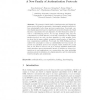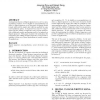99
Voted
BIRTHDAY
2012
Springer
13 years 8 months ago
2012
Springer
In this note we describe a cryptographic curiosity: readable messages that carry their own digital signature.
108
Voted
IJNSEC
2010
14 years 7 months ago
2010
Digital Signature Algorithm (DSA) is an underlying algorithm to form a signature in the Digital Signature Standard (DSS). DSA uses a new random number (or nonce) each time a signa...
128
click to vote
IJNSEC
2011
14 years 7 months ago
2011
Digital signature authentication scheme provides secure communication between two users. Digital signatures guarantee end-to-end message integrity and authentication information a...
95
Voted
IJACTAICIT
2010
14 years 10 months ago
2010
The aim of this work is to design an algorithm which combines between steganography and cryptography that can hide a text in an image in a way that prevents, as much as possible, ...
110
Voted
PROVSEC
2010
Springer
14 years 10 months ago
2010
Springer
Generic constructions of designated confirmer signatures follow one of the following two strategies; either produce a digital signature on the message to be signed, then encrypt th...
126
Voted
SIGOPS
1998
15 years 9 days ago
1998
Abstract. We present a related family of authentication and digital signature protocols based on symmetric cryptographic primitives which perform substantially better than previous...
CCR
2000
15 years 15 days ago
2000
An important feature of digital signatures is to serve as nonrepudiation evidence. To be eligible as non-repudiation evidence, a digital signature on an electronic document should...
133
Voted
FPL
2008
Springer
15 years 2 months ago
2008
Springer
Cryptanalysis of symmetric and asymmetric ciphers is a challenging task due to the enormous amount of involved computations. To tackle this computational complexity, usually the e...
126
click to vote
ISW
1997
Springer
15 years 4 months ago
1997
Springer
Signcryption is a new paradigm in public key cryptography that simultaneously fulfills both the functions of digital signature and public key encryption in a logically single step,...
97
Voted
ETRICS
2006
15 years 4 months ago
2006
Digital signatures and message authentication codes are well known methods for ensuring message integrity. However, they rely on computations which are too hard to be performed by ...

